
15311826613
Click to add WeChatDue to its ore characteristics, fine-grained lead-zinc ore mainly uses flotation technology in the mineral processing plant. According to the different properties of the lead-zinc ore ore, the flotation method selected is also different. Currently, the common flotation method is There are: preferential flotation, mixed flotation, equal flotation, asynchronous flotation, potential controlled flotation, floc flotation, composite activated hydrophobic floc flotation and carrier flotation and other processes. Let’s find out together below!
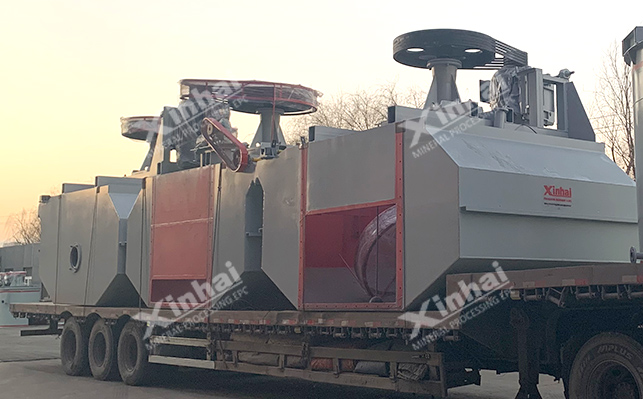
Priority flotation Lead-zinc ore selection is a method of sequential flotation separation based on the difference in the flotability of the minerals (generally, the zinc and lead are first suppressed and then the zinc is activated). By adding an appropriate amount of lime and xanthate, the pH value of the ore slurry is >12. , use xanthate to protect the surface of newly dissociated galena, and then conduct preferential flotation to recover lead. Under high alkalinity conditions, use strong collectors to recover lead through preferential flotation. The flotation lead tailings are activated with copper sulfate, the zinc sulfide coarse concentrate is recovered with butyl xanthate, and the zinc ore is selected under high alkali conditions.
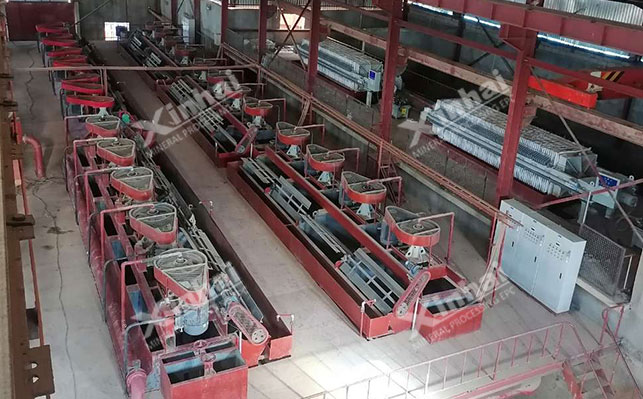
Mixed flotation of fine-grained lead-zinc ore It first uses a collector to float out lead and zinc minerals at the same time, and then floats out lead concentrate and zinc concentrate respectively. This process of flotation and tailing can reduce the investment in grinding equipment in the regrinding stage.
According to the difference in flotability of minerals, lead-zinc ore is divided into two parts: easy-to-float and difficult-to-float. Flotation is used to obtain lead and zinc mixed ores that are difficult to float and easy to float, and then lead concentrates and zinc concentrates are selected respectively. Among them, lead, lead and zinc conjoints can be obtained without adding inhibitors during the rough selection stage of easy-to-float minerals. This part of the mineral concentrate is then ground again to separate lead and zinc to obtain concentrate minerals respectively.
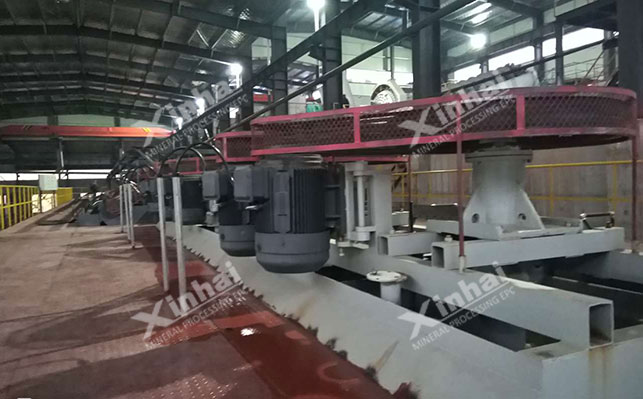
Asynchronous flotation is a step-by-step process Under different operating conditions, create suitable flotation conditions for galena and sphalerite, and float lead and zinc at the same time.
Potential controlled flotation is to change the potential changes caused by the electrochemical behavior in the lead-zinc ore flotation system and adjust the operation. The behavior is to improve the flotation process by regulating the potential, affecting the surface state of the sulfide ore and the product form and stability of the collector on the surface of the sulfide ore, and increasing the hydrophilic-hydrophobic properties of the sulfide ore surface, thereby achieving selective flotation of sulfide minerals. separation. The selective flotation separation operation of galena, sphalerite and pyrite can be completed by adding a monolithic amount of lime and combined inhibitors zinc sulfate + sodium sulfite to the ball mill in a highly alkaline slurry environment and low oxidation potential.
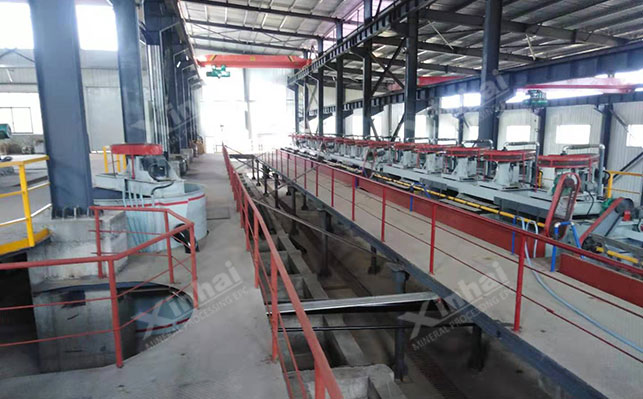
In flotation During the process, the flocculation of fine-grained lead-zinc ore is closely related to the hydrophobicity of the mineral surface. Using butyl xanthate, pentyl xanthate and octyl xanthate can make -5μm galena form hydrophobic agglomerates, but the formed The size of the hydrophobic agglomerates is uneven, the stability is poor, and the flocculation effect becomes worse if the particles are too fine. Non-polar oil can be added to improve the hydrophobic flocculation effect.
Use high-efficiency dispersants and pH adjusters to disperse the fine-grained gangue minerals and slime in the slurry, and use xanthate collectors and non-polar oil to selective fine-grained lead-zinc ores. Hydrophobic agglomeration, under the condition of appropriate mechanical stirring intensity, forms hydrophobic agglomeration with larger apparent particle size and certain mechanical strength to enhance the floatability of fine-grained lead and zinc minerals.
Floc flotation usually must meet conditions such as surface hydrophobization of mineral particles and mechanical stirring intensity that can overcome the inter-particle interaction barrier, and most of them require the addition of non-polar oil.
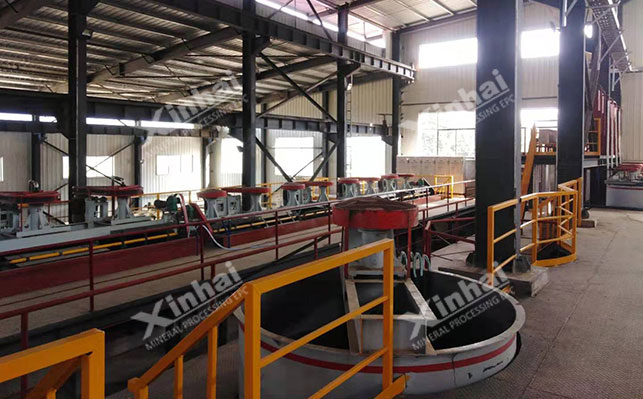
Composite activated hydrophobic floc flotation utilizes the differences in surface physical, chemical and thermodynamic properties of useful minerals and gangue minerals to keep the slurry in a stable dispersed state by adding ionic inorganic or organic polymers, and uses inorganic salts or surfactants to eliminate soluble salts and the contamination of mineral surface activity by sludge (mainly eliminating Ca2+, Mg2+, Fe3+ and hydrophilic films in the slurry), enhancing the selective adsorption capacity of the mineral surface, and adding a mixture of emulsified xanthate and non-polar oil The target mineral is selectively hydrophobic to obtain active hydrophobic agglomerates, and then mechanical activation energy is introduced into a specific mixing tank or high-speed mixer to overcome the interaction barrier between particles and strengthen the formation of hydrophobic agglomerates. Finally, conventional Flotation achieves the separation of hydrophobic aggregates and dispersed gangue minerals.
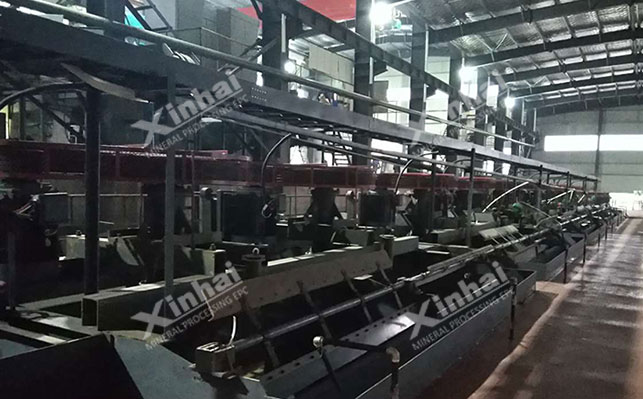
Carrier flotation is to use a coarse-grained auxiliary material to act as a carrier in the flotation under conventional flotation process conditions. By adding an appropriate amount of collector, the fine-grained lead-zinc ore particles and the carrier are fully hydrophobic at the same time. The fine particles tend to adhere to the hydrophobic coarse particles, so that the fine particles selectively cover the carrier, or the principle of hydrophobic agglomeration is used to make the particles adhere to the surface of the easy-to-float coarse mineral particles, and then the carrier is combined with the fine particles using air bubbles. Minerals emerge together.
The carrier can be a mineral of the same type as the target mineral or a heterogeneous mineral. The coarse-grained effect of the mineral particles in the flotation system and the role of the carrier are used to control the particle size range and proportion of the carrier without affecting the carrier itself. The flotation recovery of fine-grained minerals is achieved on the premise of floatability.
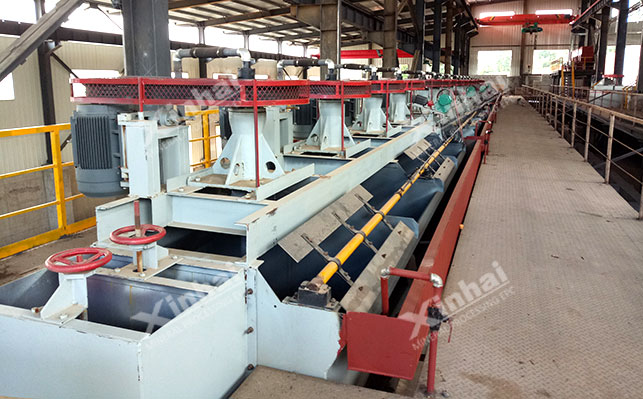
The above are the reasons why fine-grained lead-zinc ore is difficult to select, and the currently commonly used lead-zinc ore flotation technology Process, in actual mineral processing, if the above-mentioned flotation process adopts single flotation, it will be difficult to fully recover lead and zinc minerals, and a combined process must be used. In addition, in order to reduce the difficulty of flotation of fine-grained lead-zinc ores, it is necessary to strengthen the dispersion of fine-grained minerals and select suitable flotation agents as much as possible to obtain ideal indicators. For this reason, the editor recommends that you should first carry out Ore beneficiation test, through test analysis, customize a suitable ore processing process, Mineral processing equipment and suitable mineral processing chemicals.